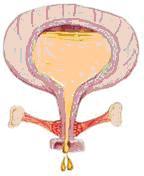 It’s Friday night and all you want to do after a long week of work is wind down in your cozy couch and watch a feel-good movie. Just five minutes into the film, your bladder starts to spasm. You try to ignore it and suppress the urge to go, but your bladder is relentless. You give in and pause the movie. Flash forward an hour later, and your bladder is back at it again. This time, you only have a few seconds to spare before making a big accident.
It’s Friday night and all you want to do after a long week of work is wind down in your cozy couch and watch a feel-good movie. Just five minutes into the film, your bladder starts to spasm. You try to ignore it and suppress the urge to go, but your bladder is relentless. You give in and pause the movie. Flash forward an hour later, and your bladder is back at it again. This time, you only have a few seconds to spare before making a big accident.
If this scenario sounds familiar to you, you know it can be quite frustrating not to be able to sit through a complete movie without hitting pause a couple of times. You may be dealing with an overactive bladder (OAB), a treatable urological condition that causes sudden and frequent urges to urinate. People with OAB may also experience urge incontinence, in which involuntary urine leakage occurs because they can’t get to the bathroom in time.
Although common among the elderly, OAB should not be regarded as a normal part of aging. The cause of the condition can be difficult to pinpoint, but factors may include poor kidney function, medication, urinary tract infections, and neurological disorders.
People with OAB often limit their social life for fear of having an embarrassing accident, or they make sure to scope out all the restrooms before going anywhere. This can really disrupt both your work and social life if you don’t learn how to manage the condition or treat it. So what can you do?
OAB Treatments
- Bladder retraining
Aside from taking a seat near the bathroom and limiting alcoholic and caffeinated drinks, you can learn how to retrain your bladder. This means creating a time voiding schedule, which involves going to the bathroom at a set interval during the day. When you get an urge, squeeze your pelvic floor muscles to suppress it. As you learn to control those timely urges, you gradually increase the voiding interval to an hour or more.
- Diet changes
Another way to manage symptoms is by changing up your diet. Did you know that certain foods can trigger a bladder spasm? Spicy foods, citrus foods, chocolate, and tomatoes can all irritate the bladder. To find out which foods your bladder can take, create a bladder diary.
- Medication
Overactive bladder can also be treated with medication, like anticholinergics. The latest development in OAB treatments includes Botox – yes, the same treatment that is used for reducing wrinkles.
If you think that you have OAB, don’t wait to get help. The condition is very treatable and should not keep you from living your life to the fullest. Contact your doctor to find out your treatment options. Hopefully soon enough, you won’t need to press that pause button or say no to a fun outing!
